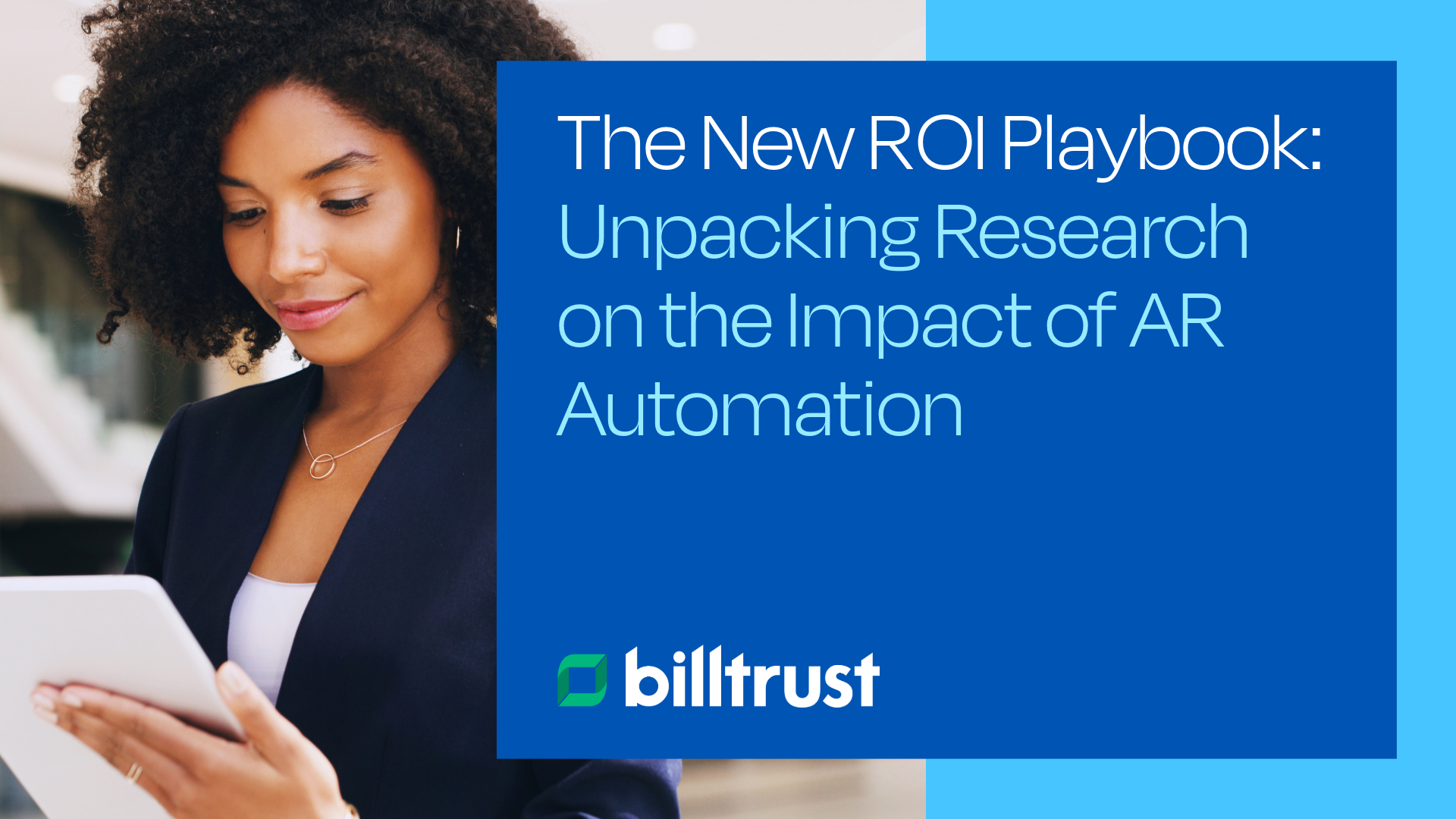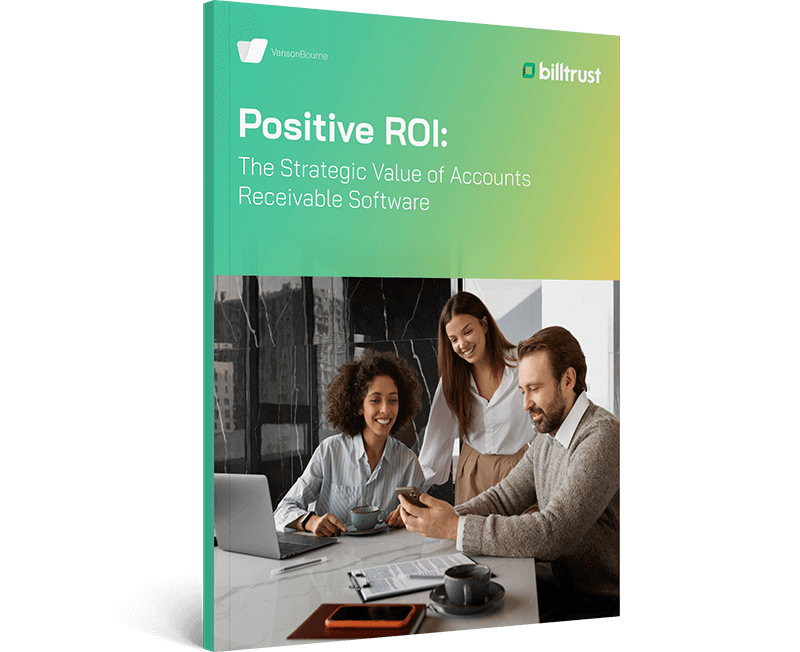The roles of the CFOs and finance leaders have fundamentally shifted. While budgets remain essential, their focus has decisively moved towards strategic leadership, risk mitigation, and the ability to drive company growth through technology innovation. It's in this environment that Accounts Receivable (AR) automation has risen as a critical component for success. Yet, what's the real business benefit gained from these software platforms? And how exactly is Artificial Intelligence (AI) rewriting the playbook for finance leaders focused on measuring ROI?
These were the central questions explored in a recent webinar hosted by me, Bob Purcell, CFO at Billtrust, and Lauren Budd, Senior Research Manager at research firm Vanson Bourne. We shared compelling findings from a recent study involving 500 finance professionals from enterprise companies. For those who couldn't attend, or simply want to revisit the key takeaways, this recap is for you.

What the Numbers Say: 93% ROI on AR Automation
A standout statistic from the research is that a staggering 93% of organizations reported that their AR software has delivered the expected ROI. In an economic climate where every investment is under scrutiny, this is a powerful testament to the value of AR automation.

Lauren Budd highlighted this early on, stating, "100% of organizations (so everyone we spoke to) that is investing in AR software, report tangible benefits."
The study dug deeper into how this ROI is being achieved:
- Accelerated cash flow: Organizations with high levels of automation in their AR processes are seeing remarkable improvements. They reported an average 41% reduction in Days Sales Outstanding (DSO) and a 44% reduction in Days to Pay (DTP). This compares to 29% DSO and 27% DTP reductions for those with low automation. As Bob Purcell aptly put it, "The velocity of your cash inflows is absolutely critical."

-
Optimized costs and processes: The top three tangible
benefits cited were:
- 42% optimized payment processing fees and policies.
- 39% improved their management of governance and compliance.
- 36% benefited from faster invoice processing and generation.

Bob Purcell emphasized the transformative power of automation: "Automation is doing more with less, or getting more scale...it's about transforming AR into a revenue enabler and growth accelerator."
Finance departments are being asked to do more than ever—manage risk, optimize cash flow, and guide strategy. The organizations that embrace automation and AI aren’t just gaining efficiency; they’re building financial resilience.
Lauren Budd, Senior Research Manager, Vanson Bourne
Beyond ROI: AR Automation as a Strategic Imperative
The research clearly shows that the benefits of AR automation extend far beyond immediate financial gains. It's becoming a strategic cornerstone for forward-thinking finance departments.
"AR software isn't being treated as a back-office overhead anymore," Bob Purcell noted. "The data is very clear: 92% of finance leaders view it as a strategic investment." In fact, the study found that 67% of organizations are allocating more than 10% of their budgets to automation and AI this year.
This finding is validated by its congruency with another recent study, which says AI automation is the one area where finance leaders aren’t dialing back their spending. Amid today’s economic backdrop, 67% are dedicating over 10% of their 2025 budget AI. More remarkably, 18% are going all-in, committing more than 25% of their budget to AI.

3 Key Strategic Advantages
- Enhanced risk mitigation: A crucial 92% of respondents stated their AR software has helped them effectively mitigate financial and compliance risks. Lauren Budd: “Many respondents shared that it has empowered them to stay ahead of evolving global regulatory requirements, like eInvoicing. It has streamlined compliance across diverse invoicing operations, provided real-time insights into buyer creditworthiness, and highlighted emerging risk trends. These capabilities enable smarter decision-making, helping to safeguard cash flow and ultimately protect their businesses.”
- Increased team efficiency: An overwhelming 95% reported that automating accounts receivable has increased their team's efficiency. Software solutions free up skilled finance professionals from manual, repetitive tasks to focus on higher-value initiatives.
- Improved customer experience: The benefits also ripple outwards. 92% of leaders stated that AR automation enhanced their customers' experience, helping to strengthen relationships and retain business.
Overcoming Barriers to AR Automation
While the case for AR automation is compelling, the journey isn't without its challenges. The study found that 99% of organizations are facing some barriers to automating their AR processes. The most significant hurdle? Difficulties integrating AR software with other existing systems like ERP and CRM (55%).

Bob Purcell: ”I’ve seen this play out across industries. You’ve got the invoice in one system, payment history in another, and customer notes in someone's inbox. By the time you’re ready to collect, you’re already behind. When AR isn’t synced with your ERP or CRM, your team ends up working in silos.”
He offered reassurance, acknowledging the challenges ahead: "Yes, it’s going to be a challenge—likely one you’re already facing—but it’s very solvable with modern AR platforms." He explained that these platforms can integrate with the right tools, eliminate blind spots, and streamline automation. “At Billtrust, we have a world-class professional services team that understands and navigates these issues with ease. We have connectors with the most important ERPs, which accelerate the path to AR automation. So, you don't have to rely only on your internal IT teams.”
Learn how Billtrust fills AR capability gaps in ERP systems
His advice to move forward? Start by mapping out your tech stack and analyzing your data flows. Engage with vendors to explore their real-time integration capabilities and weigh these options against taking a DIY approach. Focus on identifying your key pain points, emphasizing that overcoming roadblocks is the key to accelerating your cash flow.
The AI Revolution in AR: Turbo Boost Performance
No discussion about the future of finance is complete without mentioning AI. "If you haven't heard the word AI yet, you might be on a desert island somewhere," Bob quipped during the webinar. The research confirms that AI is not just hype; it's delivering a significant "turbo boost" to AR performance.
Consider these differences between organizations that have fully adopted AI in their AR processes versus those that haven't:
- Greater DSO/DTP reductions: Those with full AI adoption saw a 47% average reduction in DTP (compared to 36% for non-adopters) and maintained strong DSO reductions (41% vs. 38%).
- Stronger risk mitigation: 56% of AI adopters strongly agree AR software mitigates risks, versus 34% of non-adopters.
- Enhanced customer experience: A striking 54% of AI adopters strongly agree AR software has enhanced customer experience, compared to only 28% of non-adopters.
- Higher satisfaction: 58% of AI adopters are completely satisfied with their AR software, compared to 41% of non-adopters.

Bob Purcell painted a vivid picture of AI's potential to act autonomously on behalf of AR organizations. "AI-powered software can basically say 'Hey, I have observed you do that several times, so I've automated that work for you. Would you like to accept the results?' That‘s when I get chills...that is like the promise of AI."
Your Playbook for AR Automation Success
So, what steps can finance leaders take to leverage these insights in their own organization? The webinar concluded with some actionable advice:
- Frame AR automation strategically: It's not just a cost-saver; it's a strategic investment that drives growth and efficiency.
- Identify high-impact AI use cases: Focus on areas like payment risk detection, invoice and payment matching, or predictive analytics where AI can deliver the biggest immediate benefits.
- Start small, then scale: Don't think of it as a giant leap. Start with one small area and expand incrementally.
- Budget for the future: Ensure AR automation and AI are part of your budget planning. Gartner says finance teams have largely closed their AI adoption gap. Those who fail to invest risk getting left behind.
- Benchmark your progress: Understand how your organization's investment and adoption are progressing over time and compare to your peers.
The Future is Automated, Intelligent, and Efficient
The findings from the Vanson Bourne study, shared during our webinar, paint a clear picture: accounts receivable automation, increasingly powered by AI, is no longer a "nice-to-have" but a fundamental component of a modern, resilient, and high-performing finance practice.
Organizations that embrace these technologies are unleashing significant ROI, mitigating risks, enhancing customer experiences, and strategically positioning themselves for future success.
Want to dive deeper into the research findings?



